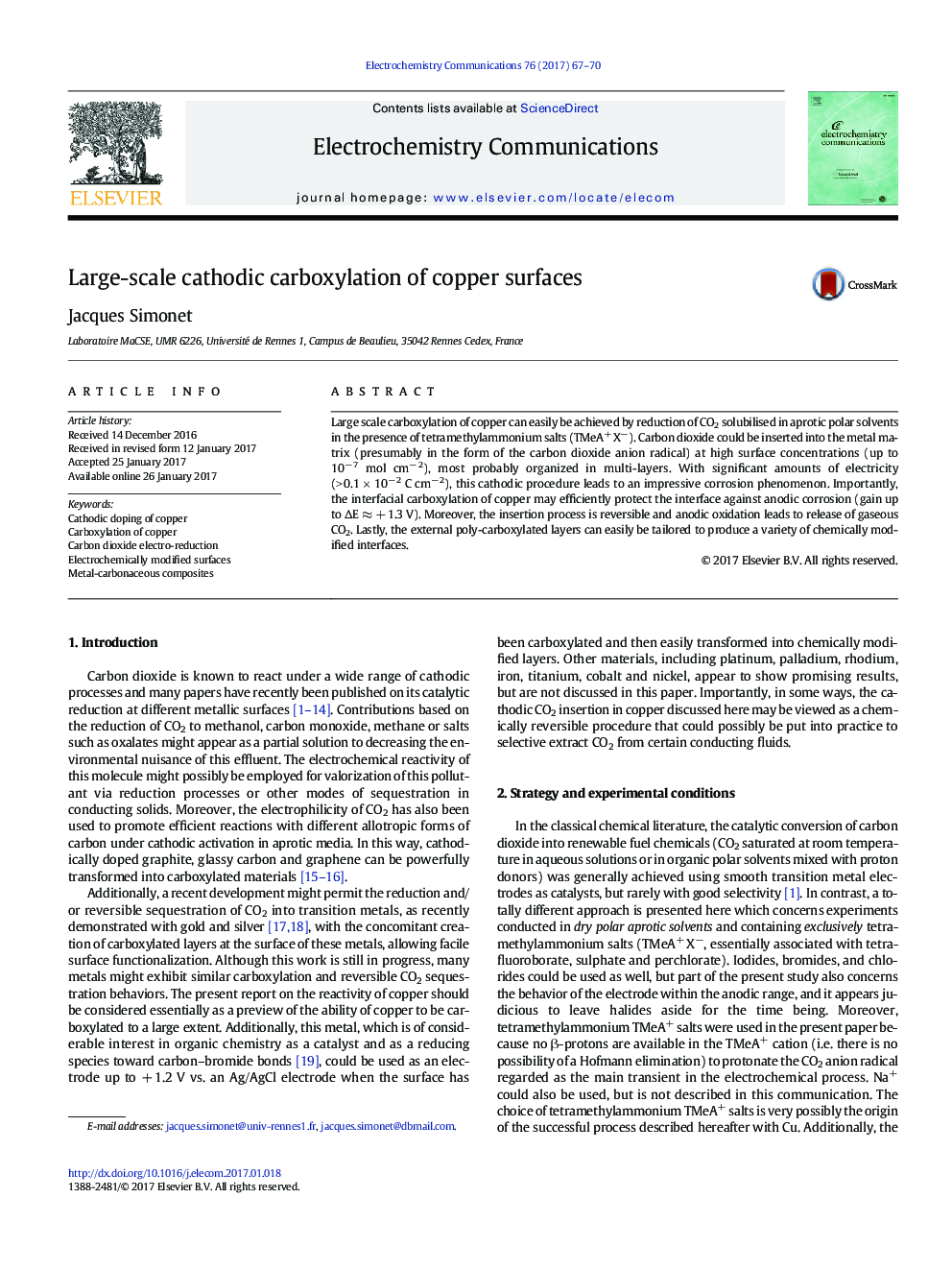| کد مقاله | کد نشریه | سال انتشار | مقاله انگلیسی | نسخه تمام متن |
|---|---|---|---|---|
| 4766506 | 1423981 | 2017 | 4 صفحه PDF | دانلود رایگان |
- Copper is chemically modified by cathodic insertion of carbon dioxide.
- Experimental conditions permit the insertion of the CO2 anion radical.
- A “reversible” carboxylation/de-carboxylation process is revealed.
- Coverage of the Cu surface by carboxylates results in a strongly hydrophilic material.
- Chemical insertion of the reduced form of CO2 causes bursting of the Cu metal.
Large scale carboxylation of copper can easily be achieved by reduction of CO2 solubilised in aprotic polar solvents in the presence of tetramethylammonium salts (TMeA+ Xâ). Carbon dioxide could be inserted into the metal matrix (presumably in the form of the carbon dioxide anion radical) at high surface concentrations (up to 10â 7 mol cmâ 2), most probably organized in multi-layers. With significant amounts of electricity (> 0.1 Ã 10â 2 C cmâ 2), this cathodic procedure leads to an impressive corrosion phenomenon. Importantly, the interfacial carboxylation of copper may efficiently protect the interface against anodic corrosion (gain up to ÎE â + 1.3 V). Moreover, the insertion process is reversible and anodic oxidation leads to release of gaseous CO2. Lastly, the external poly-carboxylated layers can easily be tailored to produce a variety of chemically modified interfaces.
188
Journal: Electrochemistry Communications - Volume 76, March 2017, Pages 67-70
